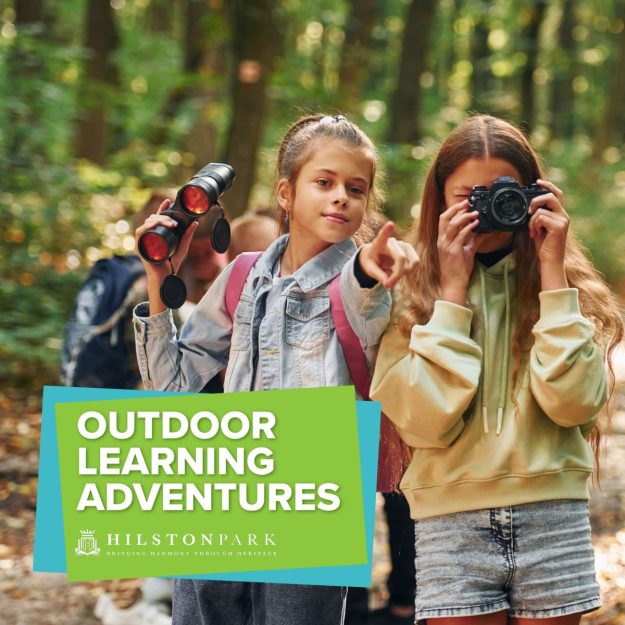Nature’s Classroom – Unlocking the Benefits of Outdoor Learning in Primary Schools

In the ever-evolving landscape of education, the concept of outdoor learning in primary schools has emerged as a transformative pedagogical approach. As educators and parents alike seek holistic development for young learners, the outdoors provides an immersive and dynamic setting for valuable experiences that extend beyond the traditional classroom. In this guest blog, we will explore the multifaceted benefits of outdoor learning in schools, shedding light on the ways in which nature becomes a vibrant classroom, fostering not only academic growth but also a deep connection with the environment.

I. The Transformative Power of Nature-Based Education
- Holistic Development:
Outdoor learning offers a holistic approach to education, addressing not just academic needs but also nurturing emotional, social, and physical well-being. The diverse sensory experiences in nature contribute to a more comprehensive development of a child’s cognitive and motor skills.
- Enhanced Engagement:
The natural world captures children’s attention in unique ways, sparking curiosity and enthusiasm for learning. Lessons conducted outdoors often result in increased engagement, as the dynamic environment serves as a catalyst for exploration and discovery.
II. Connecting with the Environment
- Environmental Stewardship:
Outdoor learning instills a sense of environmental responsibility from an early age. Through first-hand experiences, students develop a deeper understanding of ecosystems, fostering a commitment to preserving and protecting the environment.
- Sustainability Education:
Nature serves as an excellent backdrop for lessons on sustainability. Students can witness the interconnectedness of living organisms and ecosystems, cultivating an appreciation for the delicate balance that sustains life on Earth.
III. Academic Enrichment in the Great Outdoors
- Science in Action:
Outdoor environments provide living laboratories for scientific exploration. From observing plant life cycles to identifying local fauna, students can witness scientific concepts in action, making lessons more tangible and memorable.
- Mathematics in Nature:
The outdoors offers ample opportunities for hands-on mathematical activities. From measuring the height of trees to calculating the area of a field, students can apply mathematical principles in real-world scenarios, enhancing their understanding of abstract concepts.
IV. Overcoming Challenges and Maximizing Benefits
- Safety Measures:
While the benefits of outdoor learning are substantial, implementing safety measures is paramount. This section will delve into strategies for ensuring a safe outdoor learning environment, addressing concerns related to supervision, weather conditions, and risk assessment.
- Curriculum Integration:
Effectively integrating outdoor learning into the curriculum requires thoughtful planning. This segment will provide practical tips for educators on aligning outdoor activities with academic goals, ensuring a seamless and enriching educational experience.
V. Success Stories – Realizing the Impact of Outdoor Learning
- Case Studies:
Explore real-world examples of primary schools that have successfully implemented outdoor learning initiatives. These case studies will showcase the positive outcomes, both academically and developmentally, resulting from embracing nature as an extension of the classroom.
VI. Empowering Educators and Parents – Implementing Outdoor Learning Strategies
- Professional Development:
This section will discuss the importance of professional development for educators, offering insights into training programs and resources that empower teachers to effectively integrate outdoor learning into their pedagogical approach.
- Parental Involvement:
Engaging parents in the outdoor learning journey is crucial. This segment will provide strategies for involving parents in nature-based education, fostering a collaborative approach to children’s learning experiences.
VII. Overcoming Challenges and Maximizing Benefits
- Weather-Responsive Learning:
Incorporating weather-responsive learning into outdoor education is an essential aspect of planning. This section will explore how educators can adapt their lessons based on weather conditions, ensuring that outdoor learning remains a feasible and enjoyable experience regardless of the elements.
- Risk-Benefit Assessment:
Balancing risk and benefit is crucial in outdoor education. This segment will guide educators on conducting risk-benefit assessments, helping them make informed decisions about the type and level of activities suitable for different age groups and settings.
VIII. Success Stories – Realizing the Impact of Outdoor Learning
- Student Testimonials:
Hear directly from students who have experienced the transformative effects of outdoor learning. Personal testimonials will offer a glimpse into how these experiences have shaped their perspectives, enhanced their learning journeys, and contributed to their personal growth.
- Community Engagement:
Explore how outdoor learning initiatives can extend beyond the school environment and into the broader community. Initiatives such as community gardens, environmental clean-up projects, and partnerships with local organizations can amplify the impact of outdoor education.
IX. Empowering Educators and Parents – Implementing Outdoor Learning Strategies
- Integration with Technology:
Explore the intersection of outdoor learning and technology. This section will discuss how educators can leverage digital tools to enhance outdoor experiences, from using nature apps for identification to documenting observations through multimedia.
- Educational Resources:
Provide a curated list of educational resources that educators and parents can utilize to further their understanding of outdoor education. This could include books, online courses, and websites dedicated to nature-based learning.
X. The Future of Outdoor Learning in Primary Schools
- Trends and Innovations:
Look into emerging trends and innovations in outdoor education. This section will explore how schools are incorporating sustainable practices, utilizing green spaces, and leveraging technology to further enrich outdoor learning experiences.
- Advocacy and Policy Considerations:
Advocate for the integration of outdoor learning into educational policies. Discuss the importance of recognizing outdoor education as a valuable component of the curriculum and explore ways to promote its inclusion on a broader scale.

Conclusion – Cultivating Lifelong Learners through Outdoor Education
As we navigate the evolving landscape of education, the case for school outdoor learning becomes increasingly compelling. From fostering a love for the environment to enhancing academic outcomes, the benefits are profound. By embracing nature as a classroom, we not only provide students with a well-rounded education but also cultivate in them a lifelong curiosity, respect for the world around them, and a deep-seated love for learning. Outdoor education isn’t just an alternative; it’s a gateway to a richer, more meaningful educational experience for our youngest learners.




